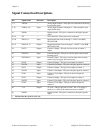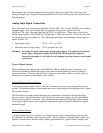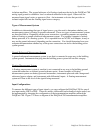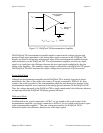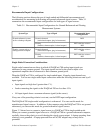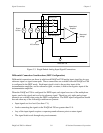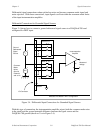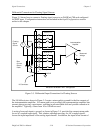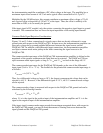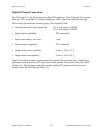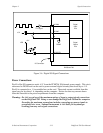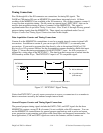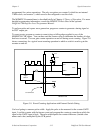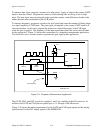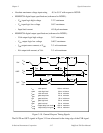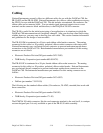
Chapter 3 Signal Connections
© National Instruments Corporation 3-11 DAQCard-700 User Manual
the instrumentation amplifier contributes a DC offset voltage at the input. The amplifier has a
maximum input offset current of ±0.75 nA and a typical offset current drift of ±1.5 pA/° C.
Multiplied by the 100 kΩ resistor, this current contributes a maximum offset voltage of 75 µV
and a typical offset voltage drift of 150 nV/° C at the input. Thus, the offset is unlikely to be
more than an LSB, so it can usually be ignored.
If the input signal is DC coupled, only the resistor connecting the negative signal input to ground
is needed. This connection does not lower the input impedance of the analog input channel.
Common-Mode Signal Rejection Considerations
Figures 3-4 and 3-5 show connections for signal sources that are already referenced to some
ground point with respect to the DAQCard-700. In these cases, the instrumentation amplifier can
reject any voltage due to ground potential differences between the signal source and the
DAQCard-700. In addition, with differential input connections, the instrumentation amplifier
can reject common-mode noise pickup in the leads connecting the signal sources to the
DAQCard-700.
The common-mode input range of the DAQCard-700 instrumentation amplifier is defined as the
magnitude of the greatest common-mode signal that can be rejected. The DAQCard-700 can
reject common-mode input signals so long as V
+
in
and V
-
in
are both in the range ±9.5 V.
The common-mode input range for the DAQCard-700 depends on the size of the differential
input signal (V
diff
= V
+
in
-
V
-
in
). The formula for the permissible common-mode input range is
as follows:
V
cm-max
= ± (9.5 V - V
diff
/2)
Thus, for a differential voltage as large as 10 V, the largest common-mode voltage that can be
rejected is ±4.5 V. However, if the differential signal is 2.5 V, ±8.25 V common-mode voltage
can be rejected.
The common-mode voltage is measured with respect to the DAQCard-700 ground and can be
calculated by the following formula:
V
cm-actual
= (V
+
in
+ V
-
in
)/2
where V
+
in
is the signal at the positive input of the instrumentation amplifier and V
-
in
is the
signal at the negative input of the instrumentation amplifier.
If the input signal common-mode range exceeds the maximum computed above with respect to
the DAQCard-700 ground, you need to limit the amount of floating that occurs between the
signal ground and the DAQCard-700 ground.



